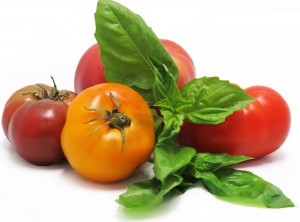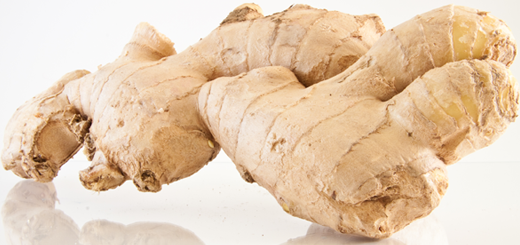Tantalizing Dry Farmed Tomatoes

Geri Wohl, CNC
Better Eating Coach
Written By: Geri Wohl, CNC
www.bettereatingcoach.com
Early Girl, Stupice, Cherokee Purple, Brandywine Pink, Black Krim. What do they all have in common? All these tomato varieties can be dry farmed. If you are like most people, the term “dry farmed” is not part of your lexicon.
Water is essential for our very existence. Even plants require water to thrive. For more about the benefits of water, see my article, “Eating Well to Lose Weight: Wonders of Water“. But water is becoming a scarce resource, and we are all being asked to do our part to conserve, even farmers. Dry farming is one way to achieve significantly lower water usage. Dry farming is a method that restricts a plant’s water intake resulting in a fruit or vegetable with higher sugar content and more intense flavors.
Dry farming has been used for thousands of years especially in the Mediterranean region that has a climate similar to our own northern California one—rainy winters followed by dry, hot summers. It was a common practice for growing grapes on the California coast from the 1800s to the early 1900s. It is now seeing a resurgence, especially with California in the throes of a three year drought and water being so scarce. Grapes, tomatoes, cucumbers and melons are the most common produce being grown in this manner.
Not all regions can employ this technique. Typically, an area needs to have at least 20 inches of rainfall during the winter so that the soil is fully laden with water by the spring. Soil and water management are key to the success of dry farming. The soil needs to be water-retentive. Forget about trying this in sandy soil. The soil is too porous and won’t hold onto the moisture. Best is a clay soil that will retain the water. Plants are spaced about four to six feet apart to allow the roots enough space to grow in their search for underground water. The plants, in this case tomatoes, are established for a few weeks with water and then the irrigation is stopped. The lack of water stresses the tomatoes causing them to grow a deeper root system tapping into the underground water supply.
Dry farmed tomatoes (and other produce) will be smaller in size and have a smaller yield than those grown with irrigated water. For example, a dry farmed tomato grower may produce about four tons per acre instead of a conventionally grown farm that can grow about forty tons per acre. Even though the yield is smaller, these tomatoes are a favorite among shoppers because they are so sweet and flavorful. Since they possess less water, the nutrients are more concentrated. Dry farmed tomatoes also have thicker skins than those grown with irrigated water.
Tomatoes are rich in lycopene that has numerous health benefits. Lycopene is an antioxidant that has been associated with supporting the heart and protective against certain cancers. In addition, lycopene can support our vision especially in preventing macular degeneration. Lycopene is part of the carotenoid family and is responsible for giving tomatoes their red or orange color. Lycopene is best absorbed when consumed with dietary fats. For more about healthy fats, see my article, “Fearful Fats“. So enjoy these tomatoes with some basil, balsamic vinegar and olive oil. Or for a delicious summer dinner, try my sole with tomatoes, arugula and capers on my summer recipes page. Dry farmed tomatoes are best used in salads, salsas or roasted. These low calorie wonders also possess high levels of vitamins A, C and K and the minerals, calcium and potassium.
Tomatoes are best when stored at room temperature. The cold of the refrigerator can cause the tender flesh to turn mealy and bland. Less ripe tomatoes can be left to ripen on a countertop at room temperature.
Be aware that tomatoes are part of the nightshade family. Besides tomatoes, the most common members of this family include potatoes, eggplant and peppers. These vegetables can be associated with arthritis, leaky gut and other digestive issues in a segment of the population.
The dry farmed tomato season is short so enjoy these fresh tomatoes and savor the intensity of their flavor. You’ll be coming back for more!
© Geri Wohl, CNC












